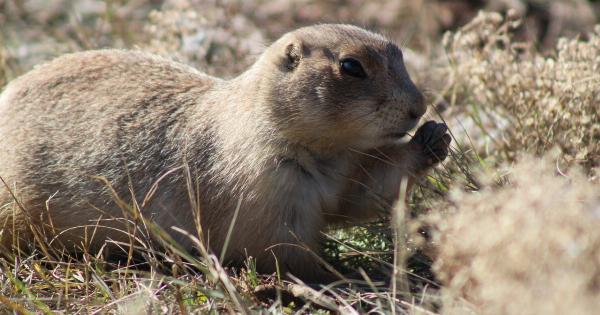Spring is a beautiful time of year when flowers bloom, birds sing, and the days grow longer. However, for many children, it also marks the beginning of seasonal allergies. The sneezing, itchy eyes, and runny noses can put a damper on their outdoor fun.
As a parent, it’s essential to know how to help your child cope with spring allergies so they can still enjoy this vibrant season to the fullest. In this article, we’ll explore various strategies and remedies to alleviate their symptoms and make their springtime experience more enjoyable.
Understanding Spring Allergies
Spring allergies, also known as hay fever or seasonal allergic rhinitis, occur when the immune system overreacts to certain airborne substances, primarily pollen.
Trees, grasses, and weeds release tiny grains of pollen into the air to fertilize other plants. However, when these pollen particles are inhaled by individuals with allergies, it triggers an immune response.
Common symptoms of spring allergies include:.
- Sneezing
- Runny or stuffy nose
- Itchy or watery eyes
- Scratchy throat
- Coughing
- Fatigue
Identifying Triggers
The first step in helping your child cope with spring allergies is to identify their triggers. Knowing what substances they are allergic to can help you take appropriate measures to minimize their exposure.
While pollen is the most common trigger during spring, there can be other allergens present as well, such as dust mites or pet dander.
Consulting an allergist is the best way to determine the specific allergen affecting your child. The allergist may recommend skin prick tests, blood tests, or may simply rely on their clinical expertise to make a diagnosis.
Pollen Avoidance
Once you have identified the pollen triggers affecting your child, it’s important to take steps to minimize their exposure. Here are some practical tips:.
- Check pollen forecasts: Keep an eye on daily pollen forecasts, usually available on weather websites or through various allergy apps. This information can help you plan your child’s outdoor activities on days when the pollen count is lower.
- Time outdoor activities wisely: Pollen counts are typically higher in the early morning and early evening. If possible, try to schedule outdoor play or sports activities during midday when pollen levels are relatively lower.
- Proper clothing: When your child goes outside, have them wear a hat and sunglasses to prevent pollen from coming in contact with their hair and eyes. Also, consider having them change clothes and wash their face and hair immediately after spending time outdoors to remove any trapped pollen.
- Keep windows closed: It’s tempting to open windows for fresh air during spring, but it can also allow pollen to enter your home. Keep windows closed during peak pollen times or use pollen-filtering screens if you need to ventilate the rooms.
- Avoid certain activities: During high pollen seasons, try to keep your child away from mowing the lawn, raking leaves, or playing in freshly cut grass, as these activities can stir up pollen particles.
Indoor Allergy Control
While minimizing outdoor exposure is crucial, controlling indoor allergens is equally important in helping your child cope with spring allergies:.
- Regular cleaning: Vacuuming carpets and furniture frequently can help remove pollen and other allergens that might have entered your home. Use a vacuum cleaner with a high-efficiency particulate air (HEPA) filter for better results.
- Bedroom precautions: Make the bedroom a safe haven for your child by using allergen-proof pillow and mattress covers. Wash bedding regularly in hot water to kill any dust mites or pollen that might have settled on them. It’s also advisable to avoid stuffed animals or keep them in airtight bags if your child is allergic to dust mites.
- Avoidance of irritants: Keep your home smoke-free as smoke irritates the airways and can worsen allergy symptoms. Additionally, strong odors from perfumes, cleaning products, or scented candles can also trigger allergies, so consider using fragrance-free alternatives.
- Humidity control: Maintain an optimal humidity level in your home (around 30-50%) to prevent the growth of mold and dust mites. Use dehumidifiers and air conditioners to control humidity, especially in areas prone to dampness like basements and bathrooms.
Over-the-Counter Medications
If your child’s allergies are causing significant discomfort, over-the-counter medications can provide temporary relief.
However, it’s essential to consult with your child’s pediatrician or allergist before starting any new medications. Some commonly used medications for spring allergies include:.
- Antihistamines: These medications block the effects of histamine, a chemical released by the immune system during an allergic reaction. They can relieve symptoms like sneezing, itching, and runny nose. However, some antihistamines may cause drowsiness, so it’s important to choose non-drowsy options for daytime use.
- Nasal corticosteroids: These nasal sprays reduce inflammation in the nasal passages and can provide long-term relief from allergy symptoms. They are especially useful for children with persistent or moderate-to-severe symptoms.
- Saltwater nasal rinses: Saline nasal sprays or rinses can help flush out allergens and thin mucus, providing relief from congestion. They are safe, non-medicated options and can be used multiple times a day.
- Decongestants: Oral decongestants can help reduce nasal congestion temporarily, but they should be used cautiously and for short periods, as prolonged use can lead to rebound congestion or other side effects.
Allergy Shots
For children with severe spring allergies that are not adequately controlled through avoidance measures or medications, allergen immunotherapy, commonly known as allergy shots, can be a potential treatment option.
Allergy shots involve regular injections of gradually increasing doses of specific allergens to help the immune system build tolerance over time.
If you think your child might benefit from allergy shots, consult with an allergist to determine if they are a suitable candidate.
Allergy shots require a significant time commitment and monitoring for potential side effects, but they can provide long-term relief from allergy symptoms.
Encourage Healthy Habits
While there is no cure for spring allergies, encouraging healthy habits can strengthen your child’s immune system and potentially reduce the severity of their symptoms:.
- Good nutrition: A well-balanced diet rich in fruits, vegetables, and whole grains provides essential nutrients and antioxidants that support overall immune health.
- Physical activity: Regular exercise and outdoor play can help improve lung function and boost the immune system. However, it’s important to choose outdoor activities wisely based on pollen forecasts.
- Hand hygiene: Encourage your child to wash their hands frequently, especially after playing outside, to remove any pollen or other allergens they may have come in contact with.
- Stress management: Stress can worsen allergy symptoms, so teach your child healthy ways to manage stress, such as practicing relaxation techniques or engaging in calming activities like reading or art.
When to Seek Medical Advice
In most cases, spring allergies can be managed effectively with the strategies mentioned above. However, there are instances when it’s essential to seek medical advice:.
- If your child’s symptoms are not improving or are worsening despite taking over-the-counter medications and following avoidance measures.
- If your child has asthma along with allergies, as uncontrolled allergies can trigger asthma attacks.
- If your child experiences severe allergic reactions, such as difficulty breathing, facial swelling, or severe hives.
- If your child’s allergies significantly interfere with their daily activities, sleep, or school performance.
Remember, each child’s allergies are unique, and what works for one may not work for another.
By understanding your child’s specific triggers, taking preventive measures, and seeking appropriate medical advice when needed, you can help your child cope with spring allergies and embrace the beauty of this vibrant season.































